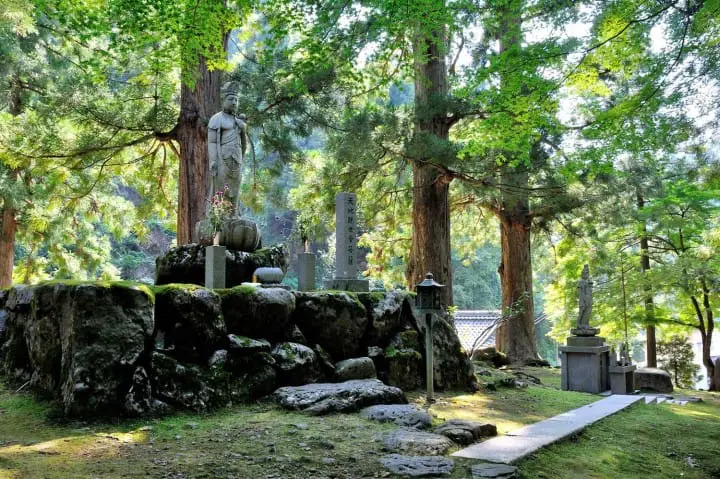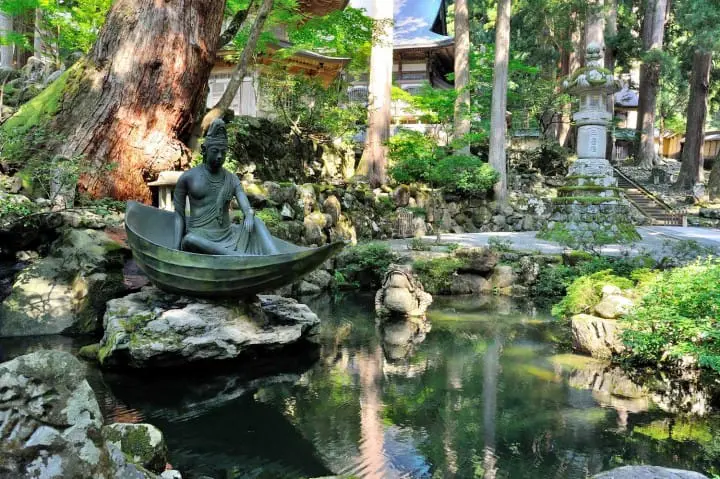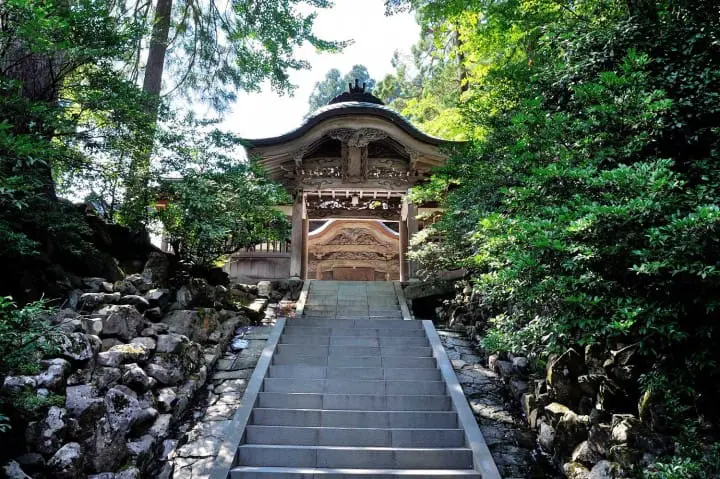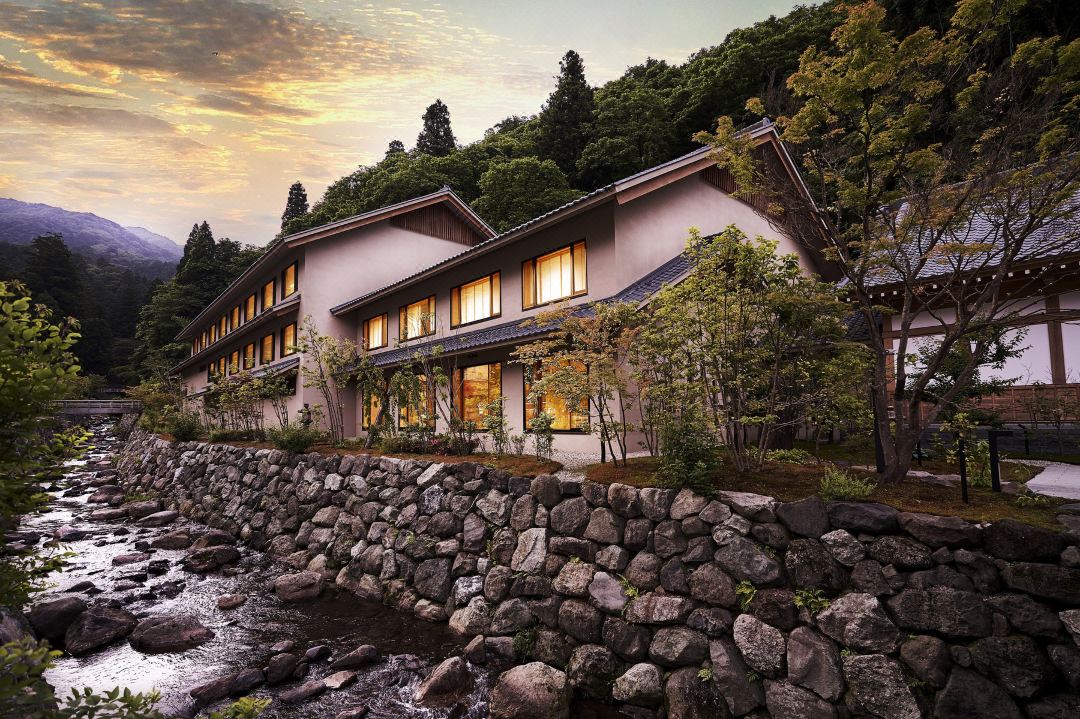Visiting Eiheiji, A Zen Buddhist Temple In Fukui Prefecture

Eiheiji is a temple in Fukui prefecture. A Zen Buddhist monastery, where visitors can experience the ascetic life of Buddhist monks, Eiheiji is also well-known for its impressive architecture.
Eiheiji is located amidst the foothills of Eiheiji city in Fukui Prefecture. Its name "Eiheiji" translates in English to "Temple of Eternal Peace". Eiheiji is the main temple of the Soto school of Zen Buddhism, which is the largest of the traditional schools of Zen Buddhism in Japan.
Dogen Zenji, the founder of Eiheiji, is also the founder of the Soto school of Zen Buddhism, as he introduced its teachings from his studies in China near the start of the 13th century.
History of Eiheiji

Eiheiji Temple was established in 1244 during Japan's Kamakura period (1185 - 1333). It was at the start of this era that the first Shogunate (a feudal military government) was established, and is marked for its great turmoil as ruling factions within different territories waged wars, as well as the invasion of Japan by the Mongol Empire.
It was also during the Kamakura period that Buddhism flourished in Japan, as people sought refuge from the great disunity and violence occurring all about them.
A Training Monastery for Monks

Dogen Zenji established Eiheiji as a monastery to disseminate the teachings of Shakyamuni Buddha, and at present there are some 150 monks residing in the temple. As in the past, they learn the teachings of Buddha, and practice zazen, seated meditation, which is at the heart of Soto Zen Buddhism practice.
Visitors may also experience for themselves the ascetic life of monks at Eiheiji, and participate in readings of the Buddhist scriptures and zazen meditation. Applications are required in advance, and overnight stays with meals and lodging are also offered.
Japanese Cedars and Maples

Dogen Zenji had chosen this remote location for his new temple as it was far removed at the time from any urban centers. The temple grounds are surrounded by towering cedar trees which are older than Eiheiji itself, and there are maples as well which are beautiful for viewing during the Autumn.
The cool and humid environs in the shade of the rich canopy overhead, provide an ideal environment where bright green moss flourishes on stones set along the many pathways.
Visiting Eiheiji

On arriving visitors are received at Kichijokaku Hall where a presentation on Eiheiji is provided, as well as an orientation on the temple rules. There are strict rules regarding etiquette, and the taking of photos of the monks as they go about their training and meditation is forbidden.

Eiheiji has a total of 70 buildings and structures spread out upon 33 hectares of land. A number of the main buildings are used and occupied by the monks as their residence, and as a result access there is prohibited. Nevertheless, visitors can spend several hours exploring, as they walk the temple grounds.
The Buddha Hall

The Buddha Hall (Butsuden) is considered the main building of Eiheiji and is appropriately located in the center of its grounds. Inside the hall are statues of Amida Buddha, Shakyamuni Buddha, and Boddhisatvs Miroku, which are the Buddhas of the Past, Present, and Future periods in life, respectively.
Japanese Buddhist Architecture

As with Buddhism, the architectural style of Buddhist temples in Japan originated from China. It was adapted however to Japan’s then existing building methods, as well as its natural environment, such as the exclusive use of wood material given the frequency of earthquakes.
The deeply curved and intricately designed eaves of the temple rooftops also serve to provide cover in a region known for its heavy rainfall.
Covered Stairwells and Alleys

Covered stairwells and alleys ascend and traverse the face of the hillside, and connect the many temple buildings. There are posted signs in Japanese and English, and they lead visitors on the self guided tour, as well as provide information on the buildings and their significance.

The covered alleys provide the much needed shade during the hot and humid summer months, as well as provide opportune locations for taking photos.
Dharma Hall for Buddhist Teachings and Convocations

The Dharma Hall is the largest of the main buildings, and appropriately so as it was used for convocations. The abbot, head monk, would take the Koza (High seat) in the altar, and from there preach the dharma (broadly speaking, the teachings of Buddha), and engage members of the assembly in debate.

The dry and cool touch of the tatami mats spread throughout the wide hall are a welcome respite from the heat and humidity outdoors, and visitors sit themselves before the altar within which are set a resplendent display of Buddhist icons and objects.
Viewing the Scenery from the Dharma Hall

The Dharma Hall occupies the highest point on the hillside, and it was here in front where I had observed a number of monks in training, as they tended to the garden. The scenery from the doorway which looks down on the buildings below, and then out and across to the forest and hills beyond, seemed to provide all with a moment of pause, and perhaps reflection.
The Gates of Eiheiji

Chujakumon Gate

Chujakumon Gate traverses the face of the hillside, and is located between the Buddha Hall and Sanmon gate. It was built in 1852, and provides scenic views from both its inside looking out, as well as from its front garden.
Joyomon Gate

In a removed location atop a stone stairwell is Joyomon gate, which leads visitors to Eiheiji's mausoleum. There inside the mausoleum the ashes of Dogen Zenji, Eiheiji’s founder, as well as other head priests of the temple’s past, are kept.
Karamon Gate

Karamon is also referred to as Chokushimon, the Imperial Envoy Gate, reflecting the fact that it's opened only upon receiving messengers from Japan’s Imperial family, and the only other exception being the abbot of Eiheiji.
Sanmon Gate

Sanmon gate is the temple’s official entrance and its oldest structure. Underneath its high ceiling are the statues of Eiheiji’s guardians, the Four Heavenly Kings, which are each Buddhist gods that stand watch over one cardinal direction of the world.
In Conclusion

Visitors to Eiheiji will find there the foundation of the Soto school of Zen Buddhism in Japan, and a place of great history and beauty. Today, it serves the same intent as when established centuries ago, as a living and breathing space within which the teachings of Buddha are practiced and transmitted through the generations.
Hotels near Eiheiji Temple
Hoping to share on some of the wonderful places and faces to be found here in Japan.








![[2025 Edition] A thorough guide to getting to the Echizen Great Buddha(Echizen Daibutsu)](https://resources.matcha-jp.com/resize/720x2000/2023/05/10-137958.webp)



































![[Just a short distance from Nagoya] Popular Taiwanese YouTuber Alan tours Aichi, Tokoname!](https://resources.matcha-jp.com/resize/720x2000/2026/01/08-255181.webp)